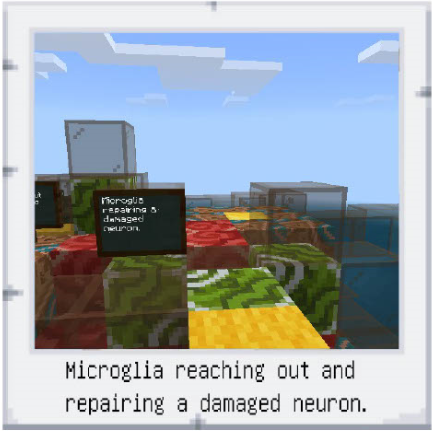As a seventh grade science teacher, one of my least favorite things to hear from students is, “why do I have to learn this?” Usually this phrase is said with a tone of voice that hints at boredom. One of the major units this phrase pops up most is ‘cells’. In biology, cells are the basic unit of life. All functions that living organisms have can be traced to these microscopic ‘cells.’ Cells are one of my favorite things to talk about! I think they are fascinating and amazing structures. Thus, it saddens me to hear of a student’s boredom on the topic. In a world where Minecraft, Mario Maker, and other ‘build it yourself’ video games are hugely popular, surely the billions of varieties of cells (the building blocks of life) can find a place to be loved too! So, this blog series of mine is an attempt to popularize cells. Today’s cell showcase is the “Microglial Cells.”
They have been described as peaceful branching trees, fierce strong soldiers, restless gardeners, and skilled security guards. Microglial cells are apart of our immune system and are spread out across our central nervous system, which includes our brain and spinal cord. But what is it about these spider web-like cells that makes them so cool? With their many cool titles comes many cool jobs that they fulfill.

Trees- Most of the time, microglia assume a peaceful state with its numerous branching arms outstretched across different parts of the central nervous system (CNS). They keep a passive eye on the processes and visitors within the CNS, feeling with its arms for potential threats or problems within the system. But once a problem is sensed, the peaceful tree quickly morphs into a powerful soldier.
Soldiers- Normally our immune system fights off invaders by sending white blood cells coursing through our circulatory system to the battle field. But the CNS is physically separated from the rest of our body so immune cells cannot rush through the blood to help battles fought in the brain or spinal cord. But the CNS needs only one elite fighter cell for its defense. Microglial cells ensnare invaders, then they literally ‘bulk up’ and prepare to engulf the invader. Once they have eaten the invader, they dissolve it using powerful enzymes. Microglial cells are like the SWAT team of the body, skilled to fight off many kinds of threats by themselves.
Gardeners- The main function of the CNS is to send messages throughout our body. When we touch something hot, a message is sent to our brain. When we hear a loud siren, a message is sent to our brain. When we smell freshly baked cookies, a message is sent to our brain. These messages are sent back and forth across our bodies thanks to cells called neurons. But sometimes these neurons get damaged. Sometimes there are neurons that just aren’t getting used as much as they used to. Sometimes there are neurons that need to be modified. Whatever the case may be, the microglial cells are the cells for the job. They act as gardeners; trimming, cutting, and removing neurons on a daily basis. Current research suggests that this constant trimming of neurons could explain the process of learning something new. When we learn something, a neuron is modified and therefore our physical response changes over time. You fall off your bike the first few times, but pretty soon your microglia adjust various neurons and your bike riding skills become better as a result!
Security Guard- While the white blood cells patrol most of our body, the microglial cells are left alone to patrol the central nervous system. They reach out with their long branching arms in search of threats. There are many different white blood cells to help recognize threats and initiate a coordinated attack on all invaders in our bodies. But in the CNS, there’s only microglial cells. They do it all. They have a wide variety of tools necessary to recognize a threat and coordinate an attack with multiple microglia if necessary. Since our brain and other nervous tissue is so sensitive and vital for living functions, the microglia need to be masters of their many jobs as immune system cells in the CNS. And trust me, they are worthy of the title “Microglia, Masters of the CNS.”
Check out my interpretations of these cells in action by taking a look at the Minecraft photo album below.








